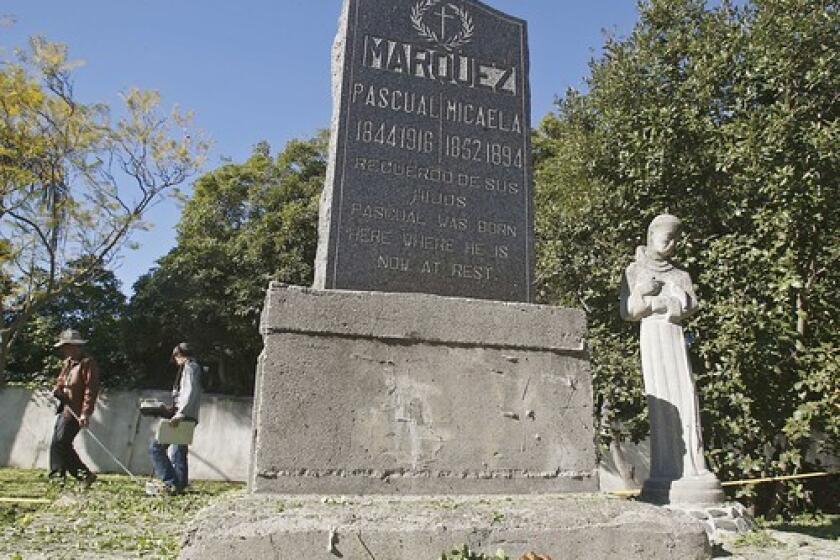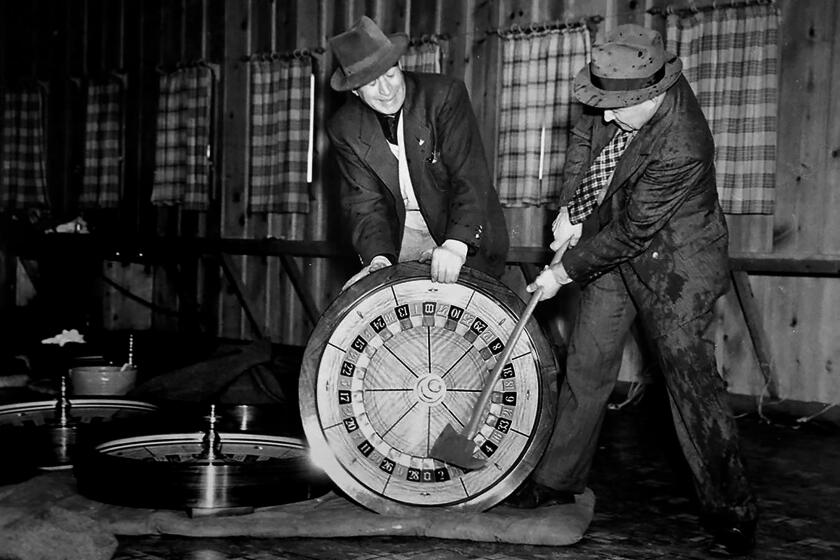Ernest Marquez, Santa Monica historian and descendant of rancho owners, dies at 99
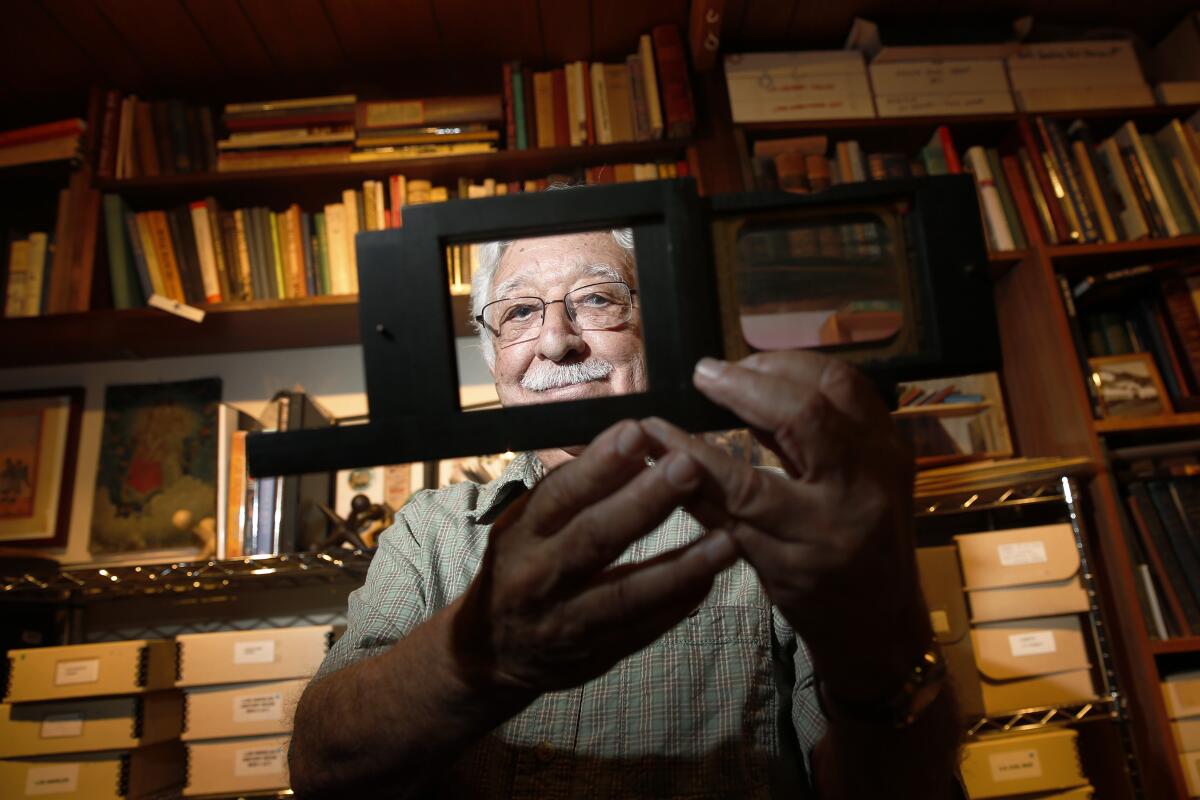
- Share via
For Ernest Marquez, the stretch of Santa Monica sand had a particular resonance — and sparked a bitter memory.
After the self-taught historian released “Santa Monica Beach” in 2004, his publisher arranged an appearance for him at the tony Jonathan Club on Pacific Coast Highway.
Marquez’s Mexican ancestors had owned the 6,656-acre land grant rancho that included part of what is now Santa Monica. During the book signing, Marquez spoke about his heritage — and how, during his early years, it had afforded him little.
“I am honored to be here, signing my book, because when I was a child, I was cast off the beach of the Jonathan Club for being Mexican,” Marquez told the audience, according to Angel City Press co-founder Paddy Calistro.
She said that the club’s members were proud to host Marquez — and that times had changed.
“That day,” Calistro said, “Angel City Press sold more books at a private event than we ever had.”
Marquez, a prolific chronicler of his hometown who mined his family’s saga for his histories, died Saturday at a hospice center in North Hollywood after a short illness, his daughter Monica Marquez said. He was 99.
Preservationists aim to learn the boundaries and burial locations of the historic Marquez Family Cemetery to develop a restoration plan and open it to the public.
Late in life, Marquez, who grew up in Santa Monica Canyon, went on a years-long crusade to rehabilitate a family cemetery that an ancestor built in the 1840s. As with other things, Marquez brought a singular focus to “preserving his history,” his daughter said.
Even though Marquez lived in West Hills for many years, she said, his devotion to his hometown was undiminished: “He always talked about how much fun he had growing up.”
Ernest Marquez was born March 12, 1924, coming of age in interwar Southern California. He attended Santa Monica High School, and, according to a dust jacket biography from one of his books, enlisted in the U.S. Navy after graduating. The biography, from “Port Los Angeles: A Phenomenon of the Railroad Era,” said Marquez served for 3½ years during World War II and then returned to Santa Monica.
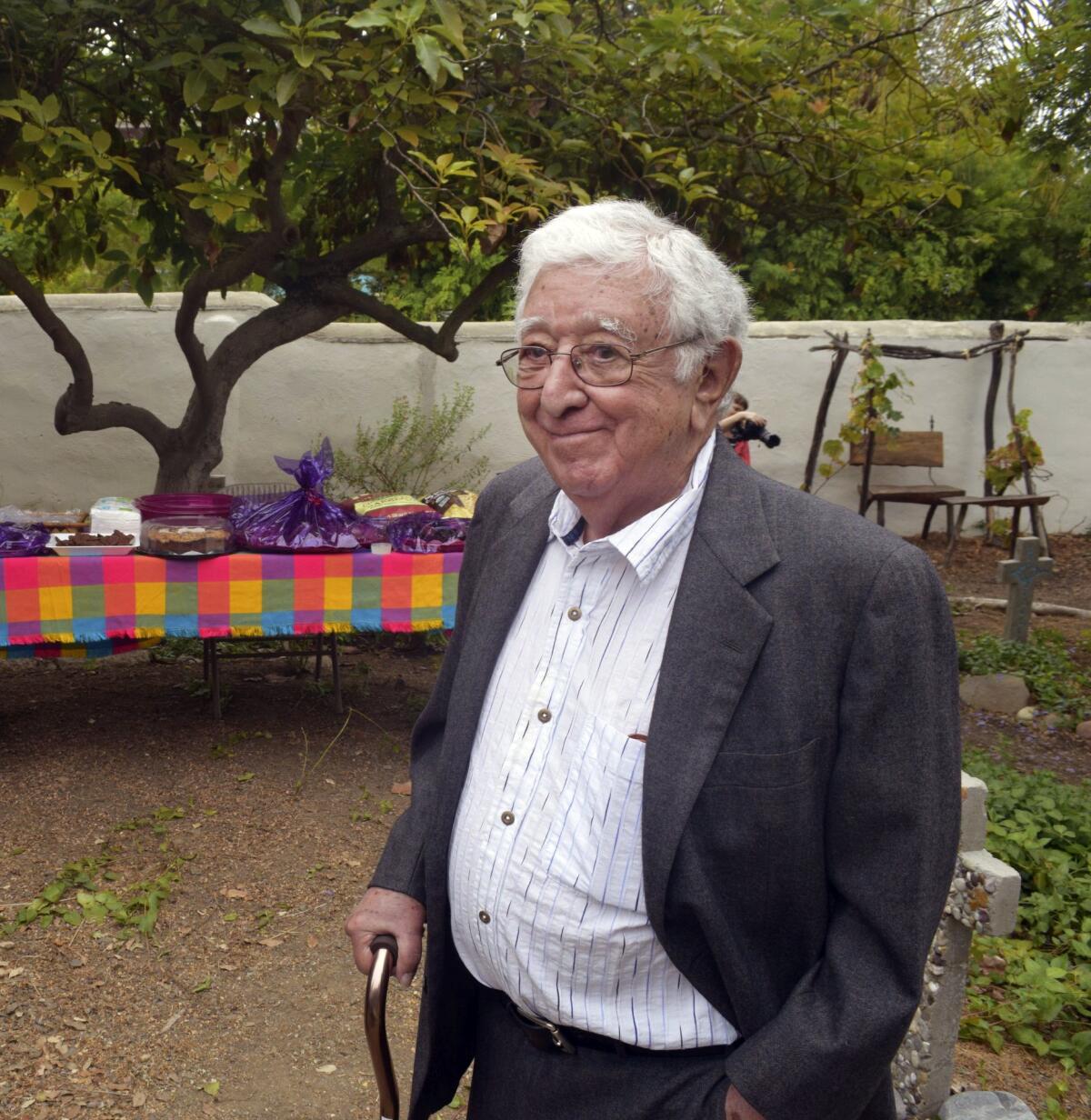
After a stint at Jefferson Machamer School of Art in Santa Monica, Marquez moved to New York, where he became a freelance magazine cartoonist. His work, Monica said, was featured in publications including the Saturday Evening Post and Collier’s.
“He’d spend the week drawing cartoons, and every Friday he would go around and show what he had, and the editors would go, ‘No. No. Yes!’” she said.
In 1952, Marquez married Lois Burke, and shortly thereafter, the couple moved to Southern California. But they didn’t settle in Santa Monica. His daughter explained: “They couldn’t afford it. So they moved to what is now West Hills.”
Marquez began a career as a commercial artist in the aerospace industry, spending many years at Garrett Corp. in L.A. By the 1980s, Marquez, long interested in his heritage, was ready for another act and retired.
“He said that working was a complete waste of time,” Monica said.
It was a joke, she said. But he meant it too.
Marquez dove into his new career as a historian. He had a keen eye when it came to collecting, buying items from thrift shops and other stores across the region. Books. Maps. Photographs. Postcards.
“It became an obsession,” he told The Times in 2014. “I just had to do it.”
He had a knack for picking shops that were fruitful. While driving, he’d pull over if a storefront caught his eye and gave him “a feeling,” Monica said. “He followed his feeling — that’s how he got all this good stuff.”
These materials were vital to his work. Marquez published four books with Angel City Press: “Santa Monica Beach” (2004), “Port of Los Angeles” (2007), “Noir Afloat” (2011) and “Rancho Boca de Santa Monica” (2021).
As for the photographs he collected, Marquez found a home for a vast swath of them in 2014, when the Huntington Library acquired 4,600 images he had amassed over half a century. At the time, Jennifer A. Watts, curator of photographs at the Huntington, said it was “the best and most comprehensive collection of its kind in private hands.”
Marquez was also an expert on Southern California’s gambling boat era, which “Noir Afloat” colorfully detailed, telling the story of the barges that offered gambling and drinking off the coast of Santa Monica in the 1920s and ‘30s.
The most famous proprietor of the floating vice dens was Tony Cornero, whose 1939 standoff with the authorities five miles from the shore was extensively covered in Marquez’s book. The episode, known as the Battle of Santa Monica Bay, lasted several days, ending only when Cornero departed his vessel, the S.S. Rex, because he said he needed a haircut.
In a twist, Marquez told The Times in 2020 that he had been on the Rex — before it was a gambling boat. As a Boy Scout, Marquez visited the vessel for an overnight trip in the mid-1930s, when it operated as a fishing barge.
“We slept out on the deck; we had our sleeping bags,” he said.
Water-cannon gangsters, booze-soaked vice dens: How 1939’s ‘Battle of Santa Monica Bay’ brought down L.A.’s floating casinos.
Marquez’s byzantine effort to preserve the family cemetery, closely covered by The Times, centered on property within the Rancho Boca de Santa Monica, a land grant given to Francisco Marquez and Ysidro Reyes in 1839. The burial grounds were established roughly a year later. In 1916, the historian’s grandfather was the last person buried there. Soon thereafter, the Marquez and Reyes families sold off most of what remained of the rancho, including the cemetery. In the 1940s, a developer returned the cemetery parcel, on San Lorenzo Street in Santa Monica Canyon, to the Marquez family.
However, as the area continued to be built up, the cemetery became landlocked by neighboring homes, requiring the Marquezes to use a narrow easement to access it. Eventually, the resident next door said the easement was terminated over nonuse.
In the 2000s, Marquez, with help from Monica, an attorney, waged a lengthy legal battle with the neighbor, prevailing in 2005. By then, the cemetery had been designated a historic cultural monument by the city of Los Angeles.
Later, Marquez designed and fabricated 40-pound concrete crosses to adorn the graves. Monica said that about 55 people are buried at the cemetery, and that the family has no plans for changes to the site.
“It’s going to stay a cemetery as long as I have something to say about it,” she said.
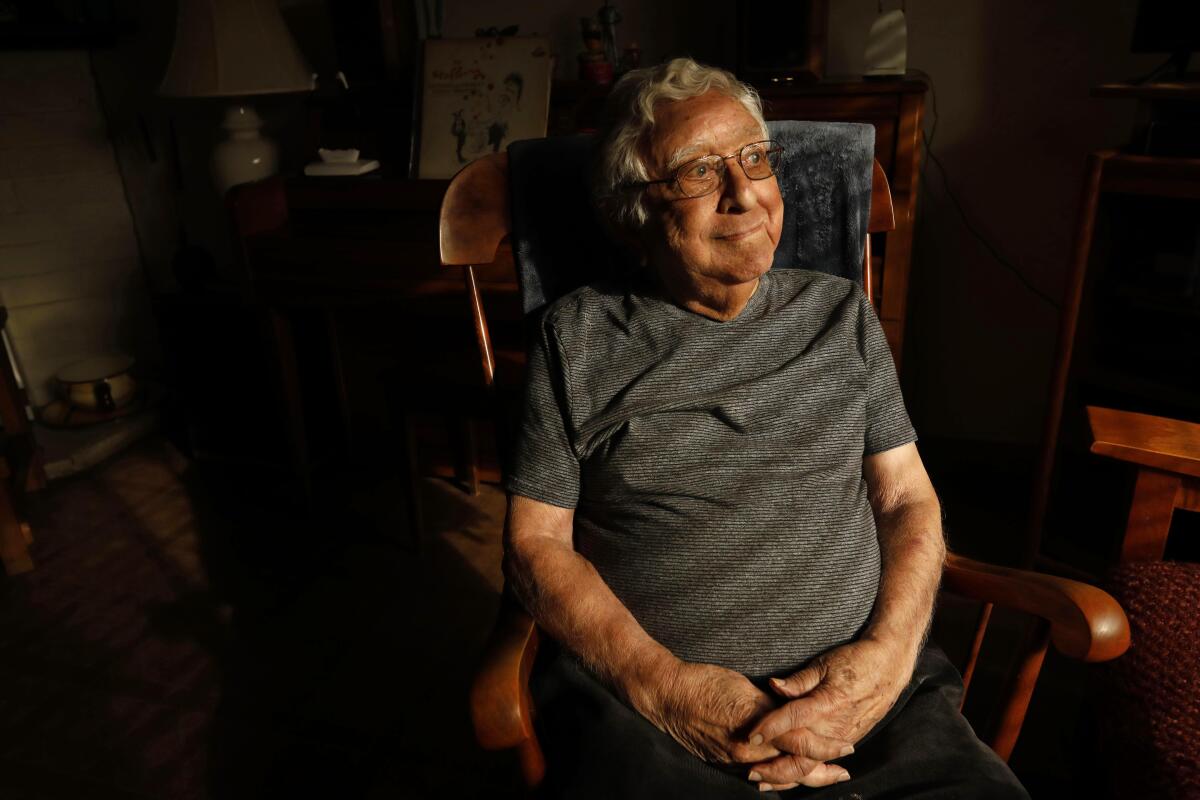
Even in his final months, Marquez was able to visit the property. Santa Monica Canyon resident Colleen McAndrews, a longtime friend, said he met with local fourth-graders who toured the cemetery Dec. 11 on a field trip.
“He loved it — he smiled,” McAndrews said. “I thought he’d still be here in March for his 100th birthday.”
Years after the cemetery struggle, the property continues to play a role in Marquez’s story. His daughter said his ashes will be buried there.
Marquez was predeceased by wife Lois Marquez and son Tommy Marquez. He is survived by children Eileen Bonaduce, Monica Marquez and Ernesto Marquez, as well as two grandchildren and two great-grandchildren.
More to Read
Sign up for Essential California
The most important California stories and recommendations in your inbox every morning.
You may occasionally receive promotional content from the Los Angeles Times.

